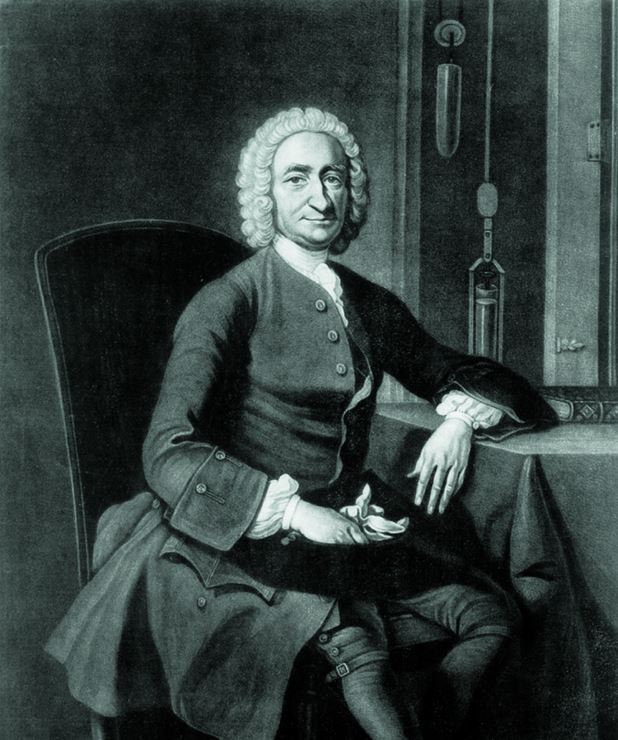George Graham (1673 – 1751), was an English clock and watchmaker, inventor, geophysicist, and a Fellow of the Royal Society. He was born the son of George Graham, in Horsgill, in the parish of Kirklinton, Cumberland, England (07 July 1673). Graham left Cumberland in 1688 for London where he was apprenticed to Henry Aske, a watchmaker. During his apprenticeship, he came under the notice of renowned watchmaker, Thomas Tompion.
Work with Tompion
After completing his apprenticeship with Aske, around 1695, Graham began working with Tompion. In 1696 he married Tompion’s niece, Elizabeth. In 1712, he became a partner in Tompion’s business. Tompion died in 1713 and Graham took over the business. Graham also inherited Tompion’s reputation as the most revered watchmaker in the city. Graham was a member of the Worshipful Company of Clockmakers becoming a freeman in 1695. He also served as master in 1722. The business was located at the Dial and Three Crowns, Corner of Water Lane & Fleet Street, London (1695-1720), then the Dial and One Crown, near Fleet Bridge, London (1720-1751).
Design work
During his career, Graham perfected a number of watchmaking designs. This included the cylinder escapement designed by Tompion, which had been patented by Barlow, Houghton, and Tompion in 1695. He also perfected the dead-beat escapement, developed by Richard Towneley and Tompion in the mid-1670s. In 1721 Graham invented the mercury pendulum, which greatly improved the accuracy of pendulum clocks. It was widely adopted in the clockmaking trade. When the mercury pendulum was combined with the dead-beat escapement, it provided a level of accuracy that was not surpassed for more than a century and a half.
Graham employed Thomas Mudge as an apprentice between 1730 and 173. Mudge went on to become a famous watchmaker in his own right. In 1755, Mudge invented the lever escapement, which was a significant advancement for pocket watches at the time and is still in use today.
Graham was a Quaker, he disliked banks and kept his money in a strongbox. He often lent large sums to his friends at no interest. One of these friends was John Harrison. The two were introduced upon Harrison’s arrival in London in 1730. Graham and Harrison spent many hours discussing clockwork when first introduced. In particular, Graham was impressed with Harrison’s thoughts on marine chronometers. As a result, Graham gave Harrison an unsecured and interest-free loan to continue his work.
Science
He had a great interest in scientific instruments and in astronomical matters. During the terms of Edmond Halley and James Bradley as astronomers royal, Graham produced instruments to their specifications for the Royal Greenwich Observatory. He also made astronomical devices for the French Academy of Sciences. He was also commissioned by Charles Boyle, 4th Earl of Orrery, to create a clockwork model showing the motions of the planets around the Sun. The device became known as an orrey. Graham was made a fellow of the Royal Society in 1721. He served on the society council in the years 1722, 1724, 1726, 1728 and 1739.
Graham died at his home in Fleet Street, London on the 16th of November 1751. He was buried in the same tomb as his mentor Thomas Tompion in Westminster Abbey.
Related content
George Graham, British Museum.
George Graham, Wikipedia.
